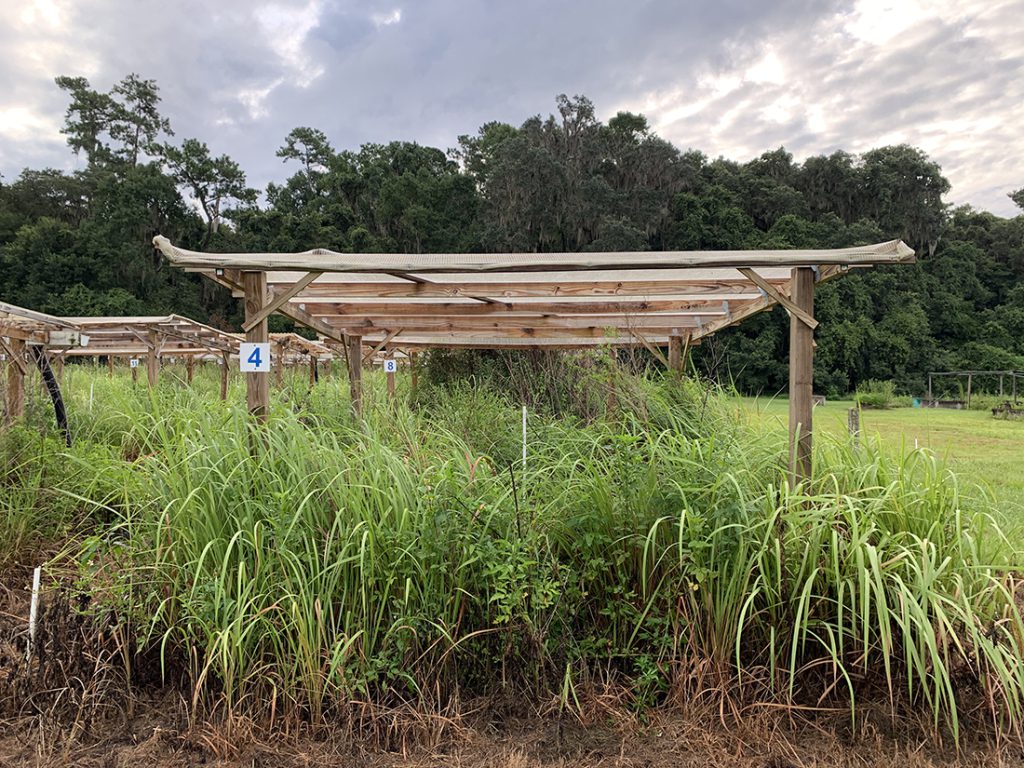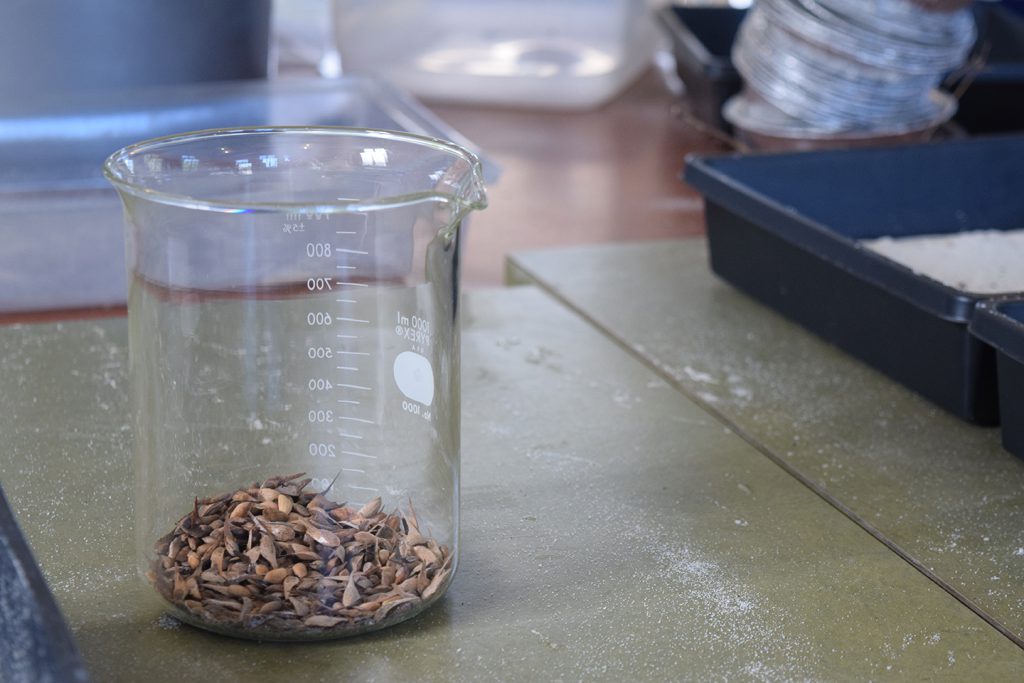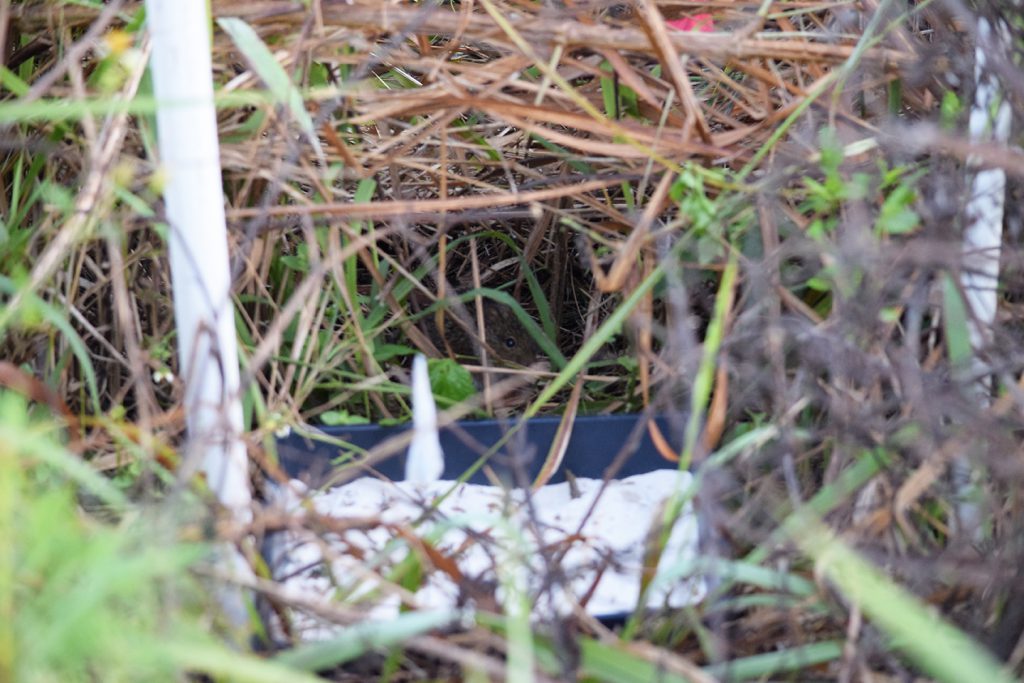- Invasive plants don’t just outcompete native plants but can also change animal behavior in ways that disadvantage native plants as well.
- Invasive cogongrass is a problem in longleaf pine ecosystems. A new study found that when cogongrass invaded longleaf pine ecosystems, cotton rats consumed more of the trees’ seeds than they did in areas without cogongrass.
- The study found that cotton rats not only consumed more seeds in areas with cogongrass, but also showed that this pattern was more pronounced in the spring and fall.

Invasive plants are known for negatively affecting ecosystems by outcompeting native plants. But sometimes these invaders affect native systems in more complex and indirect ways. New research shows invasive plants can change seasonal patterns in animal behavior in ways that could disadvantage native plant species.
Researchers with the University of Florida have just published the results of an experiment showing that when cogongrass invaded longleaf pine ecosystems, cotton rats consumed more of the trees’ seeds than they did in areas without cogongrass. The findings are published in the journal “Biology Letters.”
More seeds consumed by cotton rats may mean fewer future longleaf pines, trees whose range has been severely reduced from its historic range in in the Southeastern U.S.
The study also showed how seasonality influences these often-hidden plant-animal interactions. Cotton rats consumed more seeds in plots invaded by cogongrass during spring and fall, including the month of October, which is when longleaf pines drop their seeds for the year.
Understanding these seasonal trends could help with invasive species control efforts, said Jesse Borden, lead author of the study and a

doctoral candidate in the UF/IFAS School of Natural Resources and Environment.
“If we know an invasive plant alters animal behavior differently at different times of year, we can take into account which native species are active or have important life-history events during those times and might be most affected by these changes in behavior,” Borden said.
“Perhaps that means timing our removal efforts prior to those times of year to mitigate impacts to specific native species we want to help restore,” Borden said. “While more research is needed to see how these dynamics might play out across a landscape or with many more native species involved, our study highlights a key reason to carefully consider timing of both our research studies and management actions to most effectively understand and mitigate invasive impacts.”
While it is not entirely clear why the rats spent more time consuming seeds in areas invaded by cogongrass, Borden said the rats likely prefer these more densely vegetated areas because they offer greater protection from predators.
“Because of the cover, they feel less afraid of predators and are willing to spend longer in that habitat while they forage for seeds,” Borden explained, adding that there could be other factors, such as shelter from heat or cold, that influence the behavior as well.
To test the idea that cotton rats would eat more seeds in cogongrass-invaded areas, the researchers used experimental plots planted with longleaf pine at UF’s Bivens Arms Research Site in Gainesville, Florida. Half of these plots also contain invasive cogongrass while the others do not.
In each type of plot, the scientists added trays filled with a mix of sand and 100 longleaf pine seeds. They also set up cameras over the trays to capture rats finding and eating the seeds. Cotton rats feed mainly at night, so at the end of each night the researchers counted how many seeds were left in the trays as well as any partially eaten seeds. Based on camera footage, the researchers confirmed that cotton rats, not other species, were responsible for the lost seeds.

While many animals help plants by spreading their seeds—think squirrels hiding acorns— past research has shown rodents play a key role in reducing longleaf pine seed success, and evidence from this study showed the rats were eating, not spreading the seeds. In addition, other research has shown that rodents are big consumers of longleaf pine seeds and substantially reduce seed success, so a change in their eating behavior could have long term effects on the longleaf pine populations, the study’s authors said.
There are other recorded instances of invasive plants changing animal behavior, Borden said. For example, bison are known to avoid areas with certain invasive plants, which in turn changes how nutrients cycle in the environment through bison manure. Butterflies may switch from laying their eggs on a native plant in favor of an invasive one, which can impact both the success of the butterfly species and native plants.
Source: UF/IFAS Alert – https://blogs.ifas.ufl.edu/



